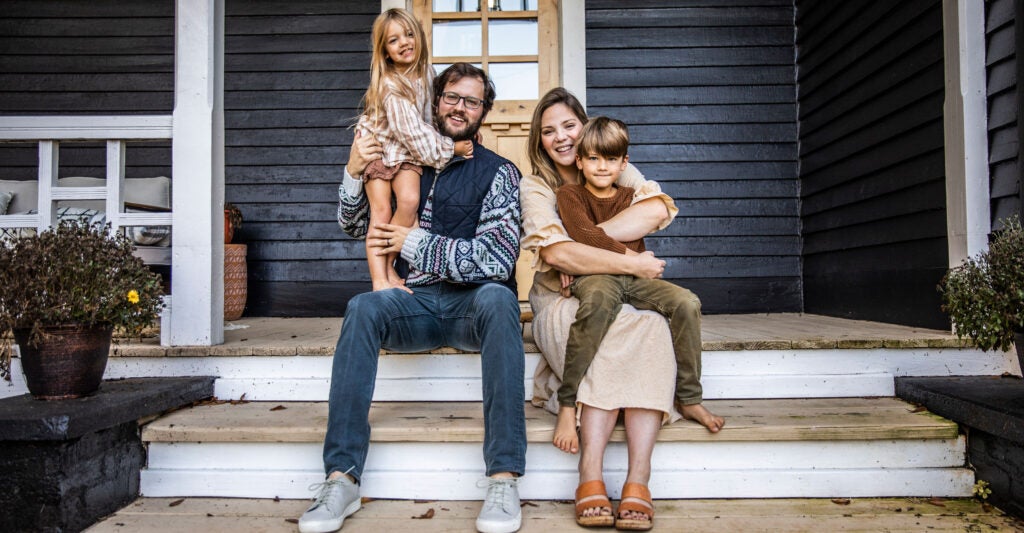Up until the 1960s, the traditional nuclear family—one man, one woman, and at least one child—was seen as the societal ideal.
But in the 1960s, the American family came under withering attack and has never been the same since—resulting in myriad societal problems that seem to spiral increasingly downward with each passing year.
The Great Society “reforms” devastated the African American family, as men no longer had to be responsible for the children they fathered as long as the government was there to subsidize their promiscuity.
Coupled with legalized abortion, men could simply walk away from a woman they impregnated because the “problem” of a child could just be disposed of by going to the local Planned Parenthood office.
No-fault divorce laws were proposed, and then passed, under the pretense of making divorce more amicable and less traumatic. Instead, divorce rates skyrocketed, devastating generations of children who saw their worlds torn apart when mom and dad decided they did not want to remain together anymore.
As Brad Wilcox of the Institute for Family Studies states, “Prior to the late 1960s, Americans were more likely to look at marriage and family through the prisms of duty, obligation, and sacrifice. … But the [1960s] psychological revolution’s focus on individual fulfillment and personal growth changed all that. Increasingly, marriage was seen as a vehicle for a self-oriented ethic of romance, intimacy, and fulfillment.”
Wilcox is right.
In the 1960s, marriage became seen as a vehicle for self-fulfillment, rather than lasting commitment. Like an automobile, once the paint faded and the engine stopped running as smoothly as it used to, it became time to get rid of the old model in exchange for an exciting new one that would bring a perception of joy.
With no-fault divorce, couples can simply walk away, like an owner of an old car, by saying, “I don’t want it anymore.”
But that joy is an illusion. In my new book, “Stumbling Toward Utopia: How the 1960s Turned Into a National Nightmare and How We Can Revive the American Dream” (Fidelis, 2024), I examine how the attacks on marriage and the family in the 1960s brought devastation to men, women, and—most particularly—children, instead.
In 1960, 73% of children lived in a traditional, two-parent married home, headed by a father and a mother. By 1980, that percentage dropped to 61%, and by 2015, it was 46%.
A 2016 study done by Alicia VanOrman of the Population Reference Bureau and Paola Scommegna found that the radical changes of the 1960s led to more children growing up poor and more adults reaching old age without either a spouse or ties to an adult child to provide care—and thus finding themselves more dependent on the government.
The rejection of traditional morality in the 1960s, accelerated by the Great Society programs that subsidized irresponsible behavior, has led to this consistent drop in the prevalence of marriage.
This has manifested itself through young adults delaying marriage, choosing to cohabitate instead of marrying (and in many cases, as I document in my book, have been encouraged by government programs not to marry), or having trouble making commitments because of previous trauma—such as the loss of a parent due to divorce.
I examine all these factors in my book. The 1960s compounded social error upon social error as the progressives of that era devalued the family, trumpeted the very actions leading to greater irresponsibility and dependence, and then offered abortion as a solution to the “perceived problem” (a preborn child) in order to allow themselves to live a life of “self-fulfillment” and “spontaneity” without responsibility.
And the true victims of this irresponsibility are the children who pay the price for being the often-unwanted products of the lauded spontaneity of the 1960s.
But there is hope, and that is what I try to provide. Many Americans are finally waking up to the cultural decay brought about by the 1960s and want to reverse the damage. This is particularly true among middle-aged adults—the children of the 1970s and 1980s—who experienced the devastation of the 1960s attacks on marriage and the family and are now embracing socially conservative views.
Let’s all pray this trend continues and that America will reject the sexual ethos of the 1960s and return to a society that values marriage and family, and honors its responsibilities to future generations.
We publish a variety of perspectives. Nothing written here is to be construed as representing the views of The Daily Signal.
